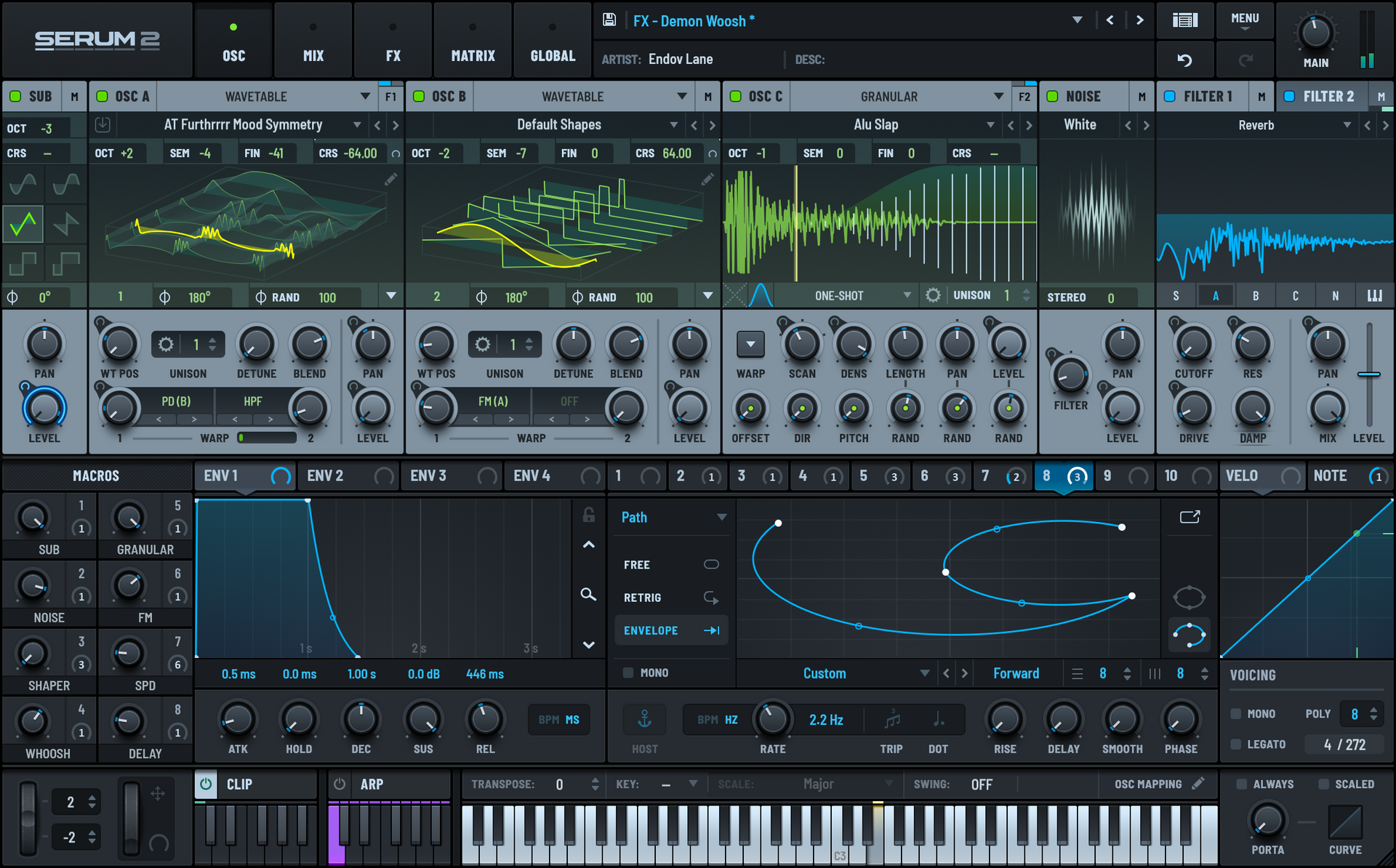How to Find Your Vocal Range: A Comprehensive Guide
Discovering your vocal range is an essential step for any singer, whether you are a beginner or a seasoned professional. Knowing your vocal range helps you choose appropriate songs, improve your vocal performance, and avoid straining your voice. This guide will walk you through the process of finding your vocal range accurately, offer tips for improving it, and highlight common mistakes to avoid.

Understanding Vocal Range
Definition of Vocal Range
Vocal range refers to the range of notes that a person can sing comfortably. It is typically divided into different types based on the pitch and frequency of the notes. Understanding your vocal range can help you identify the types of songs that suit your voice and prevent vocal damage.
Importance of Knowing Your Vocal Range
Knowing your vocal range is crucial for several reasons. It allows you to select songs that fit your voice, aids in vocal training and development, and ensures you don't strain your vocal cords by singing notes that are too high or too low for you. Furthermore, understanding your range can boost your confidence and performance skills.
How to Find Your Vocal Range?

There are a variety of ways to identify your singing range. From vocal range test apps and online tools to vocal lessons at ICON Collective. Finding your voice has never been easier. However, the best method to use for determining your range is with a piano. Try these steps using a keyboard or a piano instrument loaded in your DAW:
IMPORTANT: Before you start testing your vocal range, it's essential to
warm up your voice. Perform gentle vocal exercises such as humming, lip trills, and scales to prepare your vocal cords and prevent strain.
How to Find Your Lowest Note
Start by finding the lowest note you can sing. Find middle C (C4) on the piano and sing a consistent vowel sound like “ah,” “ee,” or “oo.” Match your voice to the C4 note. Now, travel down the white keys and sing along to each note until you reach the lowest recognizable pitch you can sustain. Your low note will be the last note you can sing comfortably without croaking or breathing the note. Match your voice with a note on the piano and write it down.
How to Find Your Highest Note
Next, find the highest note you can sing using the same method. This time, sing upwards from middle C on a consistent vowel sound until you reach the highest note you can comfortably sing. Match your voice with a note on the piano and write it down.
NOTE: As you move up in pitch, there may be notes which become hard to sing, causing cracking or croaking. These transitions are your passaggio or “break” points. Keep rising in pitch through these parts of your range until you hit your highest note. Again, you should be able to sustain that note at a consistent, recognizable pitch.
Also, make sure you’re not straining your voice. Allow your voice to stretch with the right training and practice. Your current range may not hit that money note yet, but in time you’ll get there.
Compare Your Low and High Notes
Your vocal range also plays a vital role in classifying singing voices into voice types. Once you know your low and high notes, check them against the voice types listed below.
Tips for Accurate Measurement
Finding Your Lowest Note
Start at a comfortable pitch and gradually lower your voice until you reach the lowest note you can sing clearly. Make sure to relax your vocal cords and avoid pushing your voice too hard.
Finding Your Highest Note
Similarly, begin at a comfortable pitch and raise your voice until you hit your highest note. Ensure you use proper breathing techniques and avoid straining your voice.
Avoiding Vocal Strain
When testing your vocal range, it's essential to avoid vocal strain. Take breaks if you feel any discomfort, and make sure to stay hydrated. Straining your voice can lead to vocal damage and impede your progress.
What Are the Six Voice Types?

The vast majority of voices fall into one of six vocal categories – three voice types for females and three for males. Female types are typically soprano, mezzo-soprano, and alto. While male types are generally tenor, baritone, and bass. These vocal types also have different subcategories. However, let’s focus on the six main voice classifications for now.
A voice classification categorizes the vocal ranges and describes the specific vocal qualities unique to each range. Once you know your range, use the descriptions below to find your voice type.
1. Soprano
Soprano is the highest female vocal type. A typical soprano has a range from C3 to C6. In the lower and upper extremes, some sopranos can extend down to B3 or up to G6.
2. Mezzo-Soprano
Mezzo-Soprano is the middle-range vocal type for females. It’s also the most common female voice classification. A typical mezzo-soprano has a range from A3 to A5. In the lower and upper extremes, some mezzo-sopranos can extend down to G3 or up to C6.
3. Alto
Contralto (Alto) is the lowest female vocal type. A typical alto has a range from F3 to F5. In the lower and upper extremes, some contraltos can extend down to D3 or up to A5. However, the range of a true contralto is rare for females.
4. Tenor
Tenor is the highest male vocal type. A typical tenor has a range from C3 to C5. In the lower and upper extremes, some tenors can extend down to B2 or up to F5.
5. Baritone
Baritone is the middle-range vocal type for males. It’s also the most common male voice classification. A typical baritone has a range from G2 to G4. In the lower and upper extremes, some baritones can extend down to F2 or up to C5.
6. Bass
Bass is the lowest male vocal type. A typical bass has a range from E2-E4. In the lower and upper extremes, a bass voice can extend down to C2 or up to G4.
Unique Vocal Characteristics
Vocal range is not the only factor that determines your voice type. Finding your type also relies on vocal qualities or characteristics such as:
- Tessitura – The notes you feel most comfortable singing
- Vocal Timbre – Your distinctive voice quality, tone, and texture
- Vocal Weight – The distinction between light and bright voices or heavy and darker voices
- Passaggio or Transition Points – The point of transition from your chest register (lower notes) to your head register (higher notes)
- Vocal Registers – The different sections of your range. For example, vocal fry, chest voice, mixed voice, head voice, and falsetto.
- Speech Level – Your normal speaking range
- Age and Experience – Your age and amount of singing experience will affect your voice type
- Physical Qualities – Physical characteristics such as height and weight will also affect your voice
These vocal characteristics will help you identify and classify your voice type more precisely. Knowing your voice qualities will also define your range when your singing voice borders two types.
Why Knowing Your Vocal Range Important?
Identifying your singing range is one of the essential steps you can do as a beginning singer. Knowing your range will help determine the best songs and musical key for your voice. Understanding what notes you sing the best, and the songs that fit your voice will also help you discover your unique sound as an artist.
Ideally, sing within your natural range for the best results. Also, singing outside of your range can be dangerous to your vocal health. Vocal misuse, such as straining to hit notes outside of your range, can irritate the vocal cords and cause damage. Caution pushing your voice beyond your limits!
Once you’re comfortable performing the notes within your range, you’ll be more confident about expanding your singing voice and abilities. For example, singing with more emotion, improving the quality of the notes, improving breath control, creating more dynamics, and other techniques.
Improving Your Vocal Range
Vocal Exercises
Regular vocal exercises can help expand your range. Practice scales, arpeggios, and other vocal techniques to improve your flexibility and control.
Consistent Practice
Consistent practice is key to improving your vocal range. Set aside time each day to practice and challenge yourself with new vocal exercises.
Professional Lessons
Consider taking professional vocal lessons to get personalized guidance and feedback. A vocal coach can help you identify areas for improvement and provide tailored exercises to enhance your range.
Conclusion
Understanding and finding your vocal range is a vital part of vocal training. It helps you select appropriate songs, improve your vocal performance, and protect your voice from strain. By following the steps outlined in this guide and practicing regularly, you can accurately determine and enhance your vocal range. Remember, every singer's journey is unique, so focus on your own progress and enjoy the process of discovering your voice.



